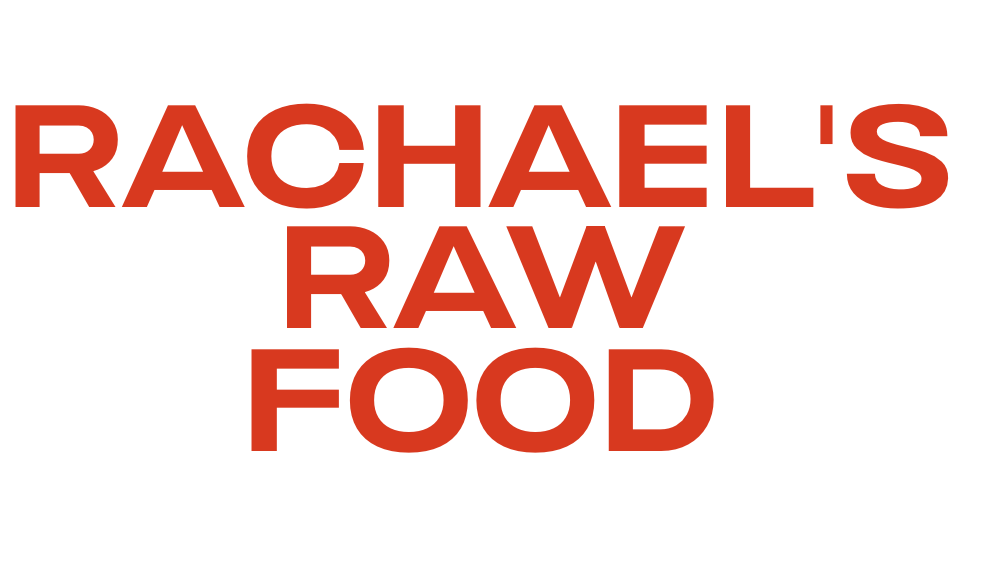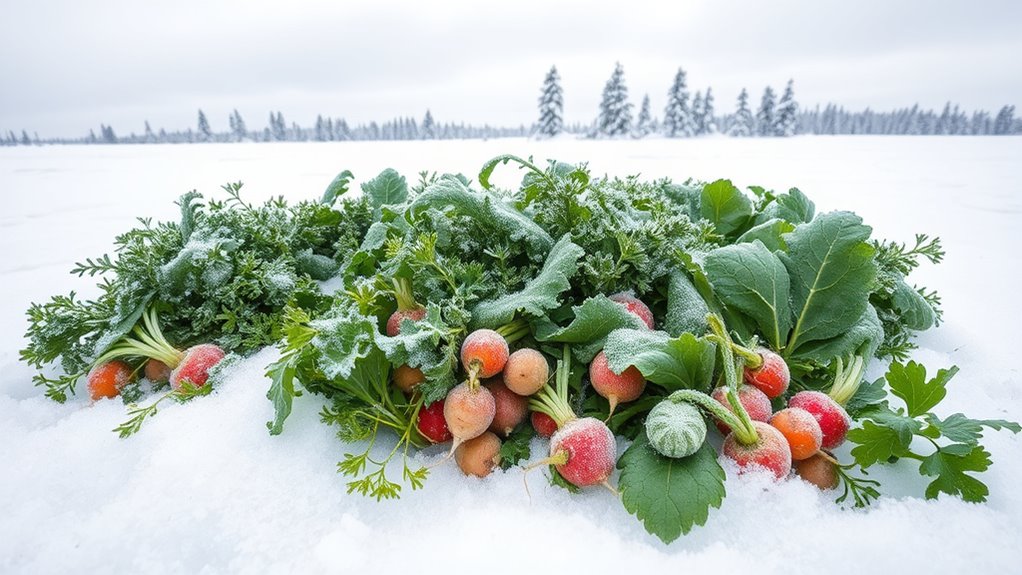In cold climates, you can thrive on a raw diet by using seasonal fermentation, dehydration, and cold storage techniques to preserve nutrients and flavor. Ferment vegetables and nuts to create probiotic-rich foods that keep well during winter. Store dehydrated fruits and vegetables in cool, dark spaces, and utilize root cellars or basements for long-term storage. These methods help you enjoy fresh, raw foods year-round—keep exploring to discover more ways to sustain your raw lifestyle all winter long.
Key Takeaways
- Utilize fermentation techniques like sauerkraut and kimchi to preserve seasonal vegetables and promote gut health during winter.
- Store dehydrated fruits and vegetables in cool, dark spaces to maintain raw nutrients and enjoy raw snacks year-round.
- Preserve summer harvests through fermentation and dehydration to access fresh, nutrient-rich foods despite limited winter produce.
- Use cold storage methods such as root cellars to keep raw produce fresh without freezing or cooking, maintaining raw qualities.
- Incorporate probiotic-rich fermented foods made from nuts and seeds to support digestion and overall health in cold climates.

Living in cold climates doesn’t mean you have to sacrifice your raw food diet. In fact, with the right techniques, you can enjoy fresh, healthy foods year-round. One effective way to do this is by mastering fermentation techniques, which allow you to transform seasonal produce into probiotic-rich foods that last through long, harsh winters. Fermentation not only preserves nutrients but also enhances digestibility and flavor, making it a crucial skill for raw food enthusiasts in colder regions. You can ferment vegetables like cabbage into sauerkraut or kimchi, which keeps well in cool, dark spaces, or craft homemade dairy-free probiotics from nuts and seeds. These techniques help you extend the lifespan of seasonal foods, ensuring you always have access to nutritious options despite limited fresh produce during winter months.
Seasonal food preservation is another cornerstone of thriving on a raw diet in cold climates. Instead of depending solely on fresh produce, you can harvest and prepare foods during peak seasons, then store them safely for later use. Root vegetables, winter squashes, and hardy greens can all be preserved through methods like dehydration, cold storage, or fermentation, maintaining their raw integrity and nutritional value. Dehydrating fruits and vegetables in a low-temperature dehydrator or in a warm, dry space helps retain enzymes and vitamins, giving you raw snacks and ingredients well into the colder months. Cold storage, such as root cellars or cool basements, allows you to keep seasonal produce fresh without freezing or cooking. This approach ensures you have access to the flavors and nutrients of summer and autumn long after those seasons pass.
Frequently Asked Questions
How Does Raw Food Digestion Differ in Cold Environments?
In cold environments, your raw food digestion shifts due to metabolic adaptation, requiring more energy to process food. You might notice your gut flora diversity increases to help break down tougher fibers and fats, enhancing digestion efficiency. This adaptation guarantees you extract maximum nutrients despite the cold. Your body adjusts by optimizing gut bacteria and metabolic processes, making raw food digestion more effective even in chilly climates.
What Are Best Raw Food Storage Methods for Winter?
To store raw foods in winter, you should use effective freezing techniques like vacuum sealing and airtight containers to prevent freezer burn. Insulation solutions such as insulated coolers or wrapping items in blankets help maintain consistent temperatures. Keep your storage area in a cool, dark place, and regularly check temperatures to guarantee freshness. Properly freezing and insulating your raw foods ensures they stay fresh and safe throughout the cold months.
Can Raw Diets Prevent Cold Weather Illnesses?
Raw diets can help prevent cold weather illnesses if you prioritize raw food safety and choose seasonal food selection wisely. By eating fresh, nutrient-dense foods, you boost your immune system, making you less vulnerable to colds and flu. Incorporate a variety of fruits, vegetables, and proteins, ensuring they’re properly stored and handled. This approach keeps your body strong and resilient against seasonal illnesses.
How to Maintain Energy Levels on Raw Food in Winter?
Ever wondered how you can keep your energy high on raw food during winter? You should incorporate a seasonal detox by adding warm spices like cinnamon and ginger to your smoothies or salads. Maintain raw food variety by including hearty root vegetables, nuts, and seeds, which provide sustained energy. Staying hydrated and eating frequent, nutrient-dense meals also help you stay energized despite the cold. Isn’t feeling vibrant worth the effort?
Are There Specific Raw Foods Suited for Extreme Cold?
Yes, certain raw foods help you adapt to extreme cold. You should focus on seasonal fruits like citrus and apples, which provide essential vitamins and energy. Incorporate hearty nut varieties such as walnuts and almonds for healthy fats that boost your warmth and stamina. These foods support your body’s needs in cold climates while keeping your diet diverse and satisfying, making it easier to stay energized during harsh winters.
Conclusion
By embracing raw foods in cold climates, you become a resilient flame in winter’s icy grip. Your body learns to adapt and flourish, turning the chill into fuel rather than fear. With the right choices, you’ll navigate the cold like a sturdy oak standing tall against winter’s storm—strong, unyielding, and thriving. Keep your spirit warm and your diet raw, and you’ll find winter’s frost just another season to conquer.










